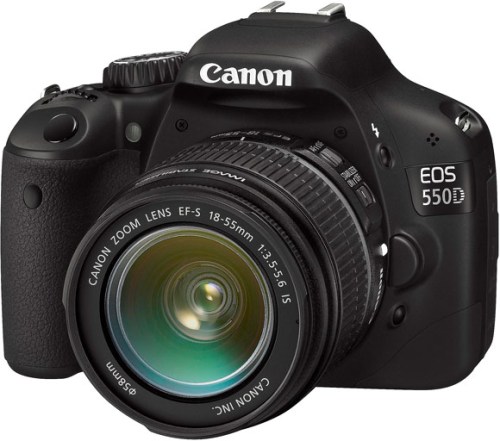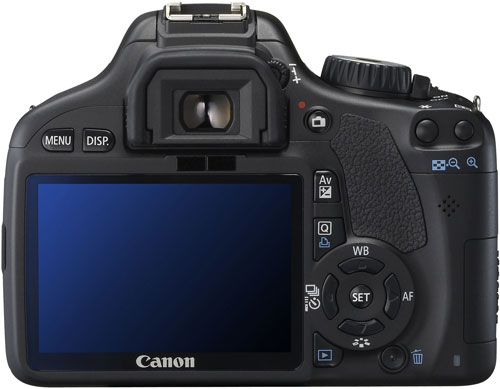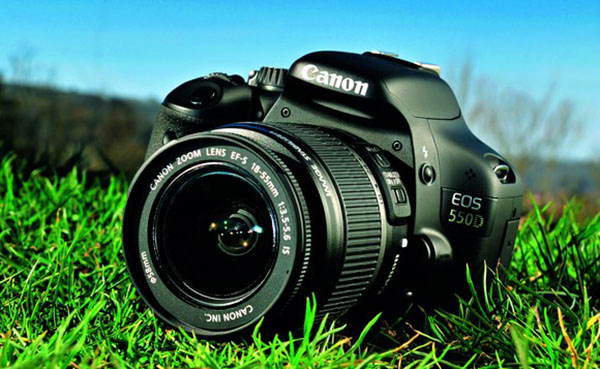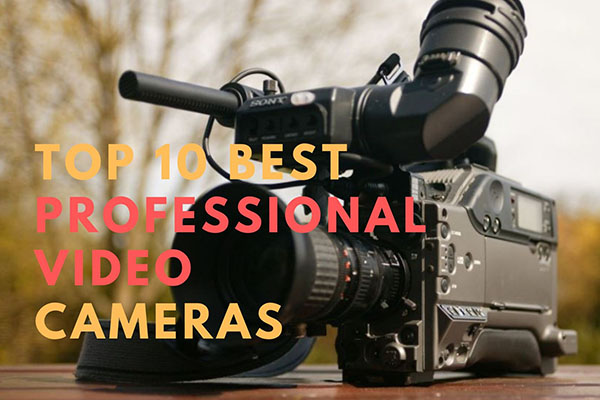The endless line up of digital cameras would be truly bewildering for consumers, to choose the right one. Many online digital camera reviews give a preview of what is in store in the product, but the in-built applications are left for the user to discover.
It is definitely not a simple and easy task to operate something that would give away quality pictures, as most of them are designed in a rather ambiguous manner with higher end features. Canon rarely takes such a long shot, because each of it’s cameras serves and satisfies one sect of customers such as casual photographers, globe trotters, and professional photographers.
The EOS line up is designed as a cusp for professional and the personal use. Many sophisticated features are included that just needs to be explored so as to magnify the shooting experience. On the other hand, the in-built technology would give a decent shot even if it is pictured by a budding amateur. The EOS 550D Digital Camera is actually the successor to the EOS 500D 15 mega pixel. The product is marketed in the North America as EOS Rebel T21.
Overview:
EOS 550D’s back bone is the 18 mega pixel CMOS sensor and the Canon’s authentic Digic 4 image processor. Together sparks are guaranteed. Creative shooting and basic image shooting mode is possible. The manual control supports up to a frame rate of 50 to 60 fps with 720 pixel resolution is possible. The 3.0” LCD screen offers better clarity with a dedicated button that offers one-stop direct access to frequently employed functions. Canon EOS 550D can be connected to an external microphone socket. One of the notable part is the compatibility of the camera with Canon’s wide spectrum of lenses.

Design:
The Canon EOS 550D Digital SLR Camera poses a striking resemblance of the 550D model. It is a pretty compact camera weighing about 530 grams. It is packed with a strap to string it along. EOS 550D is rock solid and one would feel the sturdiness while carrying the same. The body is coated with black with a tint of grey. Considering the grip part, the camera has a good provision, but at some angles, the grip is compromised.
When comparing to the previous model, 550D the buttons and controls are shuffled to some extent and the alterations propounds the aesthetic effect. The colour of the mode dial is blackish and brings a good contrasts and visibility to the buttons rather than the silver shade of 550D model.
Additionally the user can find a surprising short cut button that gives an easy access to the frequent sequential operation. This has largely reduced the cumbersome operations involved in operating the camera and has increased the user-interface.
The live view button is situated next to the viewfinder and offers a steady grip of the thumb. Hot shoe slot is available and the EX series Speedlite can be attached to it. Though the function is similar to that of built-in flash, the output is very high. Canon has even extended the compatibility of third party Speedlite but a rate of 1/200 sec, and the synchronisation of the camera with the external flash must be checked. 550 D has got a remote control terminal unit, which facilitates the operation of shutter button remotely. But the remote switch has to be brought separately.
This is a good thought for many users who would wear gloves and operate the camera or who would be trekking and would like to click a shot. Monaural sound is produced by the in-built microphone unit set near the strap-unit. Stereo sound can be produced by attaching an external microphone in to the microphone IN terminal. The focal plane situated above the strap mount measures the minimum focus distance of the camera from the subject. It blinks when the user is near to the subject.
Lens:
Canon 550D 18MP Camera is designed to integrate digital single reflex lens. It can also work with EF lenses. Attaching and detaching the lens is breezy process but has minor alignment variation. The EF-S lens should be in line with the white mark, whereas the EF lens must be in alignment with the red mark. The EF-S 18-55 mm is constructed with 11 elements in 9 groups, whereas the 18-135mm is made of 16 elements in 12 groups.
The lens image stabiliser avoids the blur shot by correcting the camera shake factor. Conversely, the image stabiliser is not as equivalent to that as some of the Panasonic Lumix model. It is because it does not greatly reduce the blur for moving objects and vigorous camera-shake. Hence it cannot be very supportive for all adventures.
Canon has generously added around 25 lenses peripheral illumination correction data to the camera, the user has a good flexibility to extend the correction data for unregistered lens by using the software instruction manual. Slight shortcomings such as the correction will be lower for higher ISO and also with lens that lack information on distance. The image sensor aspect ratio is 3.2.

LCD Screen in 550D:
The LCD screen is of TFT liquid crystal monitor type measuring to 3 inch with around 1.04 million dots. Maximum coverage and with seven brightness level adjustment is possible and it also reduces the black stripes. The image magnification on the LCD screen could be done to the tune of 1.5 x to 10 x. The live view focusing has been made a lot easier.
The LCD monitor displays shutter speed as a fraction whereas the viewfinder displays as a denominator. In the live view shooting, the LCD screen flickers a bit when the light source changes, alternatively it can be rectified by focusing in the actual light at first. The LCD screen is not robust under very bright settings and appear black and hence the purpose of live view is not achieved. However under very dark settings, if the user sets the LCD brightness higher, chrominance noise occur in the screen, but is actually not reflected in the final image, which is good point.
Mode Dial:
The mode dial in Canon 550D 18 MP APS-C CMOS sensor Digital Camera is comprised of three zones viz, the basic zone mode, the creative zone mode and the movie shooting mode. The basic zone has three different functions possible, viz fully auto, creative auto and image zone. The basic zone not only permits the fully automatic shooting but also it allows the user to fine tune basic functions, such as the brightness, depth of field in the creative auto option.
The movie shooting mode is located just adjacent to the image zone. In the creative zone mode, automatic depth of field (indicated as A-DEP in the mode dial) is relatively a new feature to be added in the mode dial. The mode dial offers a steady circular operation.
Basic Zone mode:
The basic zone has several modes such as the flash off, portrait, close-ups, landscape, sports and night portrait. The flash-off deactivates the flash at particular surrounding where it is prohibited. The portrait shooting looks appreciate when we use the telephoto end of the zoom lens and when the shutter button is held down, a maximum of 3.7 shots can be taken with different facial expressions.
The landscape mode brings out the vividness of the green and blue shades, provided the wide-angle end of the zoom lens is employed. The average distance that the user can near the subject for a close-up shot varies with the lens focus distance. The focal plane blinks when the camera is too near to the subject, if taken otherwise will give not give the intended image quality.
The sports mode represents the picture to be taken for moving objects. By far Panasonic has done a great deal with respect to image blur in moving objects; well Canon is getting tempted to outreach the image clarity. The night portrait mode is relatively better if the subject’s average distance does not exceed 5 meters. The creative auto shooting mode would be highly useful for eager enthusiast.
Once the mode is set, changes such as the depth of field, brightness can be done using the display menu four directional controls. The image record quality function stored within the creative auto mode, notifies the user the extent of quality achieved.
Creative Zone:
The creative zone consists of Program AE, shutter priority, aperture priority, manual exposure and A-DEP. Frozen actions and blurred motion can be caught effectively in the shutter priority option. Customisation of shutter speed ranging from 1/4000 sec to 1/30 sec to take moving objects and frozen images. While fine tuning the shutter speed, camera blinks when the aperture display exceeds the maximum aperture. The user can adjust the depth of field. The aperture display and the f-number adjustment largely depend on the type of lens use, however lens with higher aperture speed if used can cause camera shake which is again inevitable.
Tripod is recommended under such circumstances or the user can trigger higher ISO. In the manual exposure mode, bulb exposure can be done but it yields grainy image. Overall, the creative zone can be tweaked to a good limit to gain better and preferential image quality.
Features:
CMOS Sensor and Digic Image Sensor:
Canon’s CMOS sensor is featured in 550D Digital SLR Camera also. The image clarity and finesse of details is stable even in low lightning conditions with negligible image noise. Furthermore, might be the CMOS sensor is slightly upgraded providing a better ISO options.
The ISO expansion that was performed as a task in the previous model, is been replaced by a straightaway ISO 6400 option. The greatest expansion range is broadened thereby reducing handshake at higher ISO. The Digic 4 image has reduced the time taken for face detection, motion detection and also yields a reduced image noise.
ISO:
Canon 550D gives a good range of ISO 6400 to 12800, wherein the lighting is lower. The ISO button lies next to the power switch. An ISO range of 100 to 400 without flash is best for sunny outdoors, whereas for indoor shots a limit of 6400 is perfect. Beyond that limit, the image quality gradually decreases. However Canon has provided few options to reduce the noise reduction at higher ISO’s. When the distance from the camera and the subject is larger, the higher ISO setting extends the flash range.
iFCL metering:
The 63 zone dual layer sensor iFCL (intelligent focus, colour and luminescence) metering algorithm not only takes care of colour and luminescence value but also checks the information given at each point of the auto-focus system. Within the dual layer, individual layer is perceptive to various wavelengths, viz each layer is sensitive to each light.
They measure and analyse light within the particular spectrum. The metering system is feasible under all AF points, and the highlight is it could recognise as which section of the image is the subject. The metering system is so efficient to give consistent shots even in complex environment such as the reflections.
Full HD movie recording:
The movie recording in Canon EOS 550D can be done at manual control or at desired frame rate setting. The shooting speed can be done up to 60 frames per second and gives a resolution of 720p. With a fully charged battery the shooting time can be extended to one hour. Restrictions such as the AE lock in the manual exposure shooting, image flickering at fluorescent lighting cannot be avoided. The movie quality is definitely better if used with appropriate lens, wherein the lens must not change with zoom.

Miscellaneous Feature:
Besides the afore-said features, there are still many quality features integrated in to the camera. Take for an example, the Highlight tone priority improves the dynamic range from standard to 18% and thereby increases the highlight details. Furthermore, the file numbering method seems to be beneficial. Up to four digits number can be saved in one folder and the user can customise the same, provided the numbering sequence is intact even in card replacement conditions.
If the replaced card consists of images, those are duly numbered and carried forward. If the user does not prefer it, either formatted or new card must be used or auto-reset function can be activated. This will allocate numbers for each card added to the camera. Manual reset of the numbering is possible and the user can sort the pictures categorically. Despite the card memory, the user cannot store any image once the number is reached to 9999.
This is the only drawback noted. The camera is equipped with automatic dust cleaning mechanism. Image playback on HD television using standard HDMI cable gives a better clarity. A RGB histogram displays the image brightness and colour saturation. The mirror lock-up procedure controls the camera vibrations produced by reflex mirror that can hinder the shooting with telephoto lenses.
Battery:
The battery used is of LP-E8 type and can support up to 430 images with the optical view finder. About 160 shots are possible with live view. A charger also comes with the package contents.
Performance:
The image quality is brilliant and with the Digic 4 processor, nothing but a quality shot is assured. It is because many factors like better focusing and increase in image sharpness and noise reduction attributes a better picture quality. With an assortment of 9 focus points, the shoot is always gets better with different lenses.
Under poor light settings, the camera strives hard to pull a decent shot. But customised approach lowers this issue. With the iFCL metering system, image sharpness is good and a considerable improvement when compared to the previous models. Lower ISO gives a good shot, but at higher ISOs and moving objects the camera cannot yield a robust output. The RAW images are better as they contain the real essence.
Verdict:
Like the level of users differs based on the photographic knowledge, Canon has wisely contrived to three modes, viz basic zone mode, custom zone mode. Even in the basic zone mode, once the user is adept, option like the custom auto is highly appreciable. Coming to the design part, Canon has retained the structural similarity with the EOS 500D Compact Size Digital Camera model.
Not to mention, the extent of customisation is tremendous, right from the availability of attaching external flash, external speaker, and remote control operation by purchasing external accessories makes the camera complete. Another worth-mentioning leap is the extended frame rates. The RAW images pose a good resolution factor and less image noise. Overall the camera is versatile enough and can be handled at ease.
Canon EOS 550D Digital SLR Camera – Technical Specification Table
| Manufacturer | Canon |
| Model Name | EOS 550D Digital SLR Camera |
| Dimensions (W x H x D) | 128.8 x 97.3 x 62 mm |
| Weight | 530g |
| Colours available | Black |
| Display | Clear View TFT 1040K dots |
| Recording media | Built-in flash and memory card |
| Expansion Slot(s) | SD card, SDHC card or SDXC card |
| Camera Effective Pixel | App. 18.0 |
| Sensor | CMOS sensor |
| Focal Length | 1.6 x |
| Focusing | TTL |
| Focus range | AI Focus One Shot AI Servo |
| Metering | Evaluative metering, Partial metering at center, Spot metering, Center weighted average metering |
| Exposure compensation | +/-5 EV |
| Shutter | 30-1/4000 sec |
| Flash | Auto & Manual Flash On / Off |
| Self timer | 2 to 10 seconds |
| File format | JPEG, RAW: RAW (14bit, Canon original RAW 2nd edition, DPOF Version 1.1 compliant, Fine, Exif 2.21 [Exif Print] compliant |
| Interface | Hi Speed USB, Video Output and HDMI output |
| Battery | Rechargeable Li-ion Battery |
| Accessories supplied | Viewfinder, Lens, Case, Flash and Hand Strap |
| Warranty | One year |
- Related post: Fujifilm FinePix X100 Camera Review




